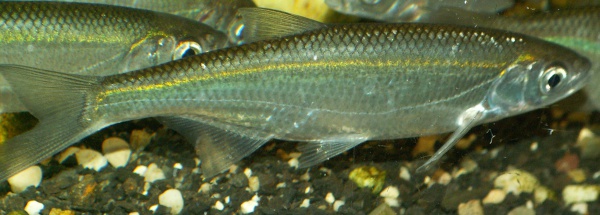Facts About Common bleak
The common bleak is a small freshwater fish that belongs to the cyprinid family. It features a long, slender body, a pointed head, and a small, upward-turned mouth. Its anal fin is notably long, with 18 to 23 rays. This fish exhibits a silvery color with pointed, colorless fins and can grow up to about 25 cm (10 inches) in length. The common bleak is found across various regions of Europe and Western Asia, although it is not present in areas like the Iberian and Apennine peninsulas and most of the British Isles.
Bleaks are social animals that live in schools and feed on a variety of small organisms, including mollusks, insects, larvae, worms, shellfish, and plant detritus. They thrive in streams and lakes, particularly in open waters where food is abundant, and are often observed near pumping stations and weirs. During spawning season, they migrate to shallow waters near the shore. These fish serve as an important food source for larger predators. However, they are more sensitive to pollution than other species in their family, which might explain their declining numbers in Northwestern Europe.
Anglers frequently use bleaks as bait to catch larger fish. Interestingly, in 1656 in Paris, a substance known as "Essence Orientale" or "pearl essence" was extracted from the scales of the common bleak. This substance, which is actually crystalline guanine, was used to create artificial pearls.

 Netherlands
Netherlands